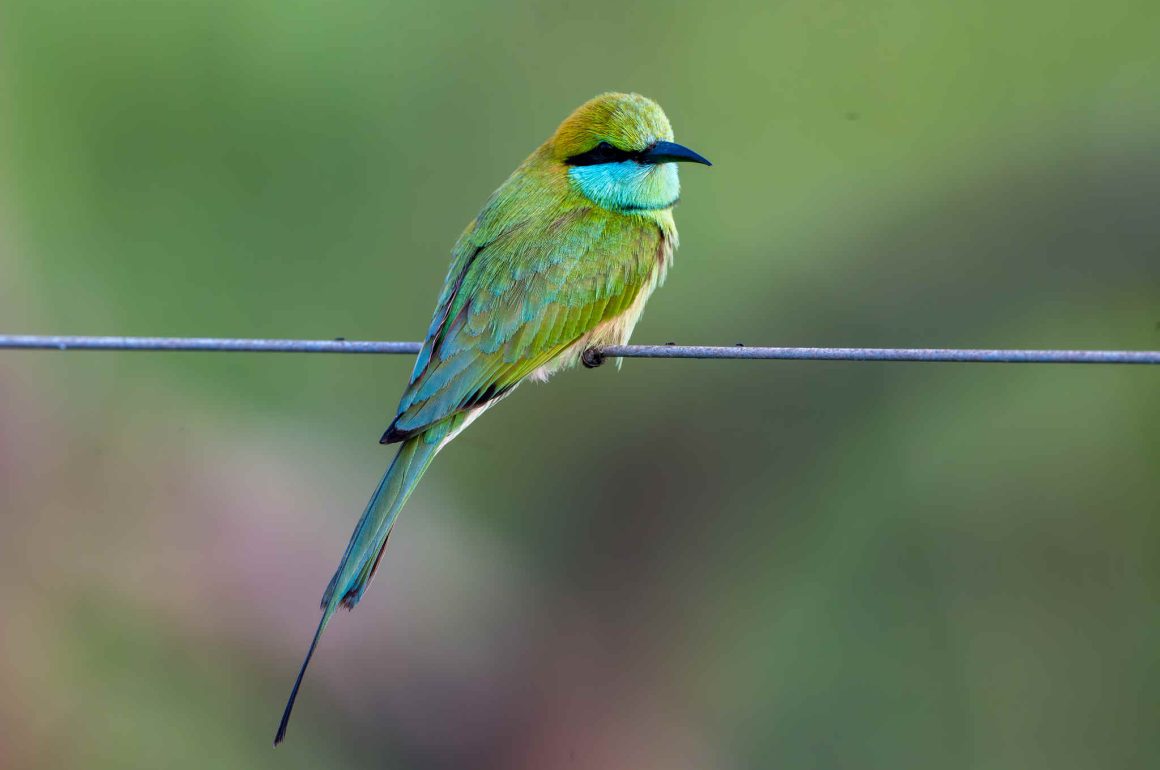
I am happy to admit that a blog post titled “Bee-eaters of Sri Lanka” is not going to get the pulse of anyone experienced in search engine optimization racing – but maybe the colors of these birds will. And compared to other locations, Sri Lanka seems to be a particularly good place to get close encounters with these birds, as they are not hunted and not shy at all, particularly in places such as Yala National Park.
Sri Lanka has four species of bee-eaters. Two (Asian Green Bee-eater, Chestnut-headed Bee-eater) are residents, the Blue-tailed Bee-eater is a common winter migrant, while the European Bee-eater (which I did not see during my stay in March 2025 – photos in this post were taken in South Africa) is an uncommon winter migrant. All four are in the same genus, Merops, which just means bee-eater in Greek.
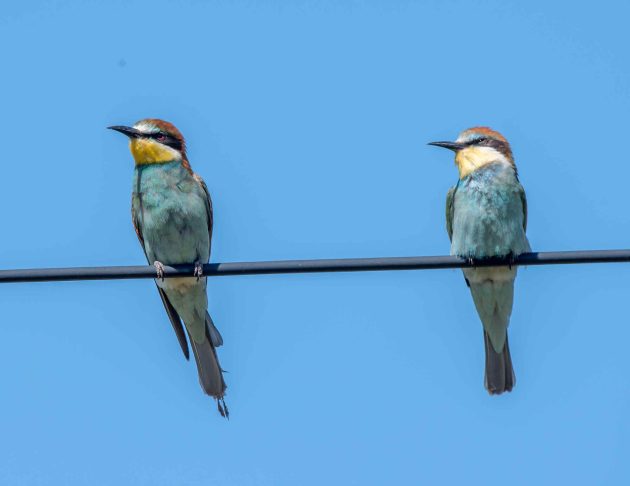
The European Bee-eater has an added “bee-eater” in its scientific name – the “apiaster” in Merops apiaster means the same as Merops, just in another dead language (Latin). Its English name is not particularly accurate. While it breeds in Europe, it also does so in large parts of East Asia and Southern Africa, and migrates through the Middle East and the remaining parts of Africa.
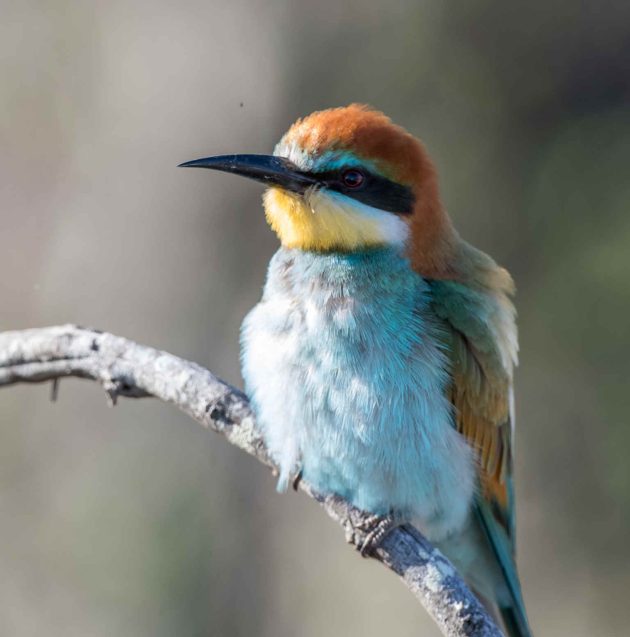
But its presence in Europe gives it a much larger presence in the HBW than that of the other bee-eater species. Its introduction section alone is 442 words long compared to 152 words for the Asian Green Bee-eater (the other two do not even have an introduction section). There is a lesson here for attention-seeking bird species.
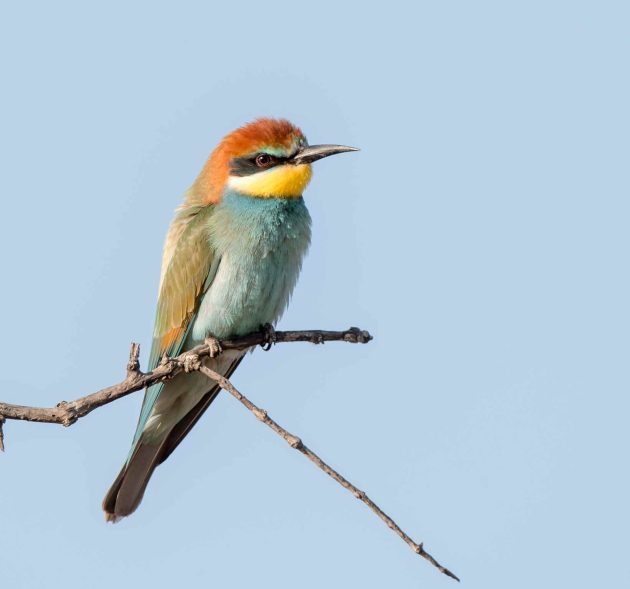
An Italian paper does not directly call European Bee-eaters stupid – it is a bit more subtle: “Copying nesting attempts in a new site may be the wrong choice”. It describes the bee-eaters unsuccessfully trying to excavate tunnels in sand mixed with pebbles, apparently blindly following established models.
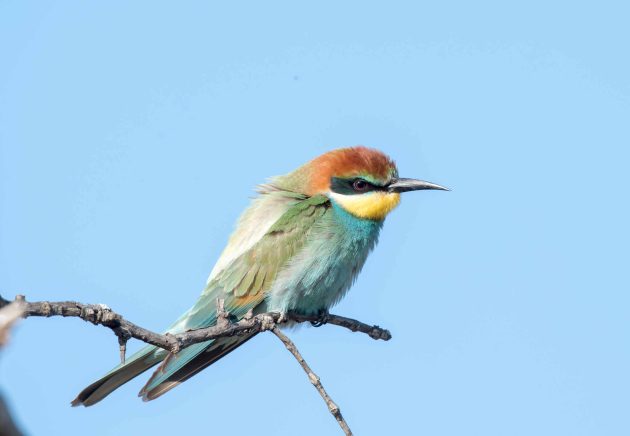
The distribution of the other three Sri Lankan bee-eaters is mainly focused on India and Southeast Asia. For the Asian Green Bee-eater, this is also indicated in the scientific name Merops orientalis.
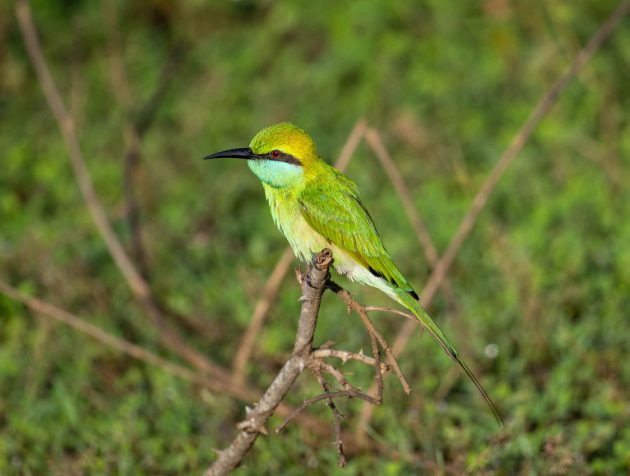
It is the smallest of these four species, but obviously large enough to kill bees. And it sometimes does so with surprisingly high efficiency. A paper in the “Korean Journal of Apiculture” (I am still sometimes surprised by the specificity of some journals, such as this one) reports on Asian Bee-eaters preying on honeybees at an apiary in Haryana, India. The number of bees returning to 4 observed hives fell from 98% of those leaving the hive to zero within 2 months.
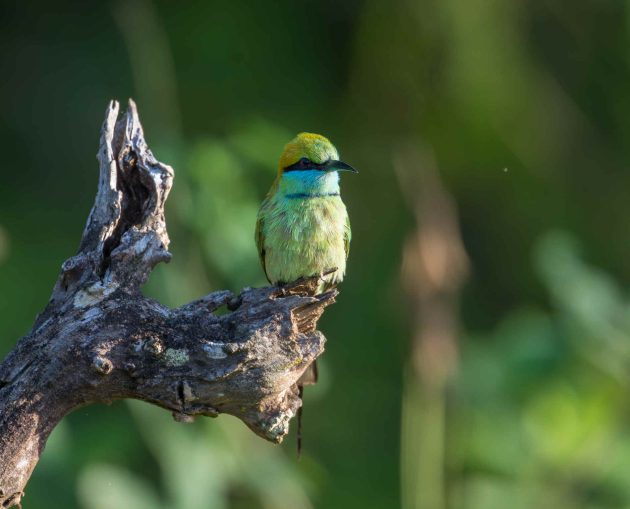
The bee-eaters also seem to have an aversion to royalty, an attitude I strongly support. In Saudi-Arabia, 80% of 30 queens successfully mated when bee-eaters (primarily European and Asian Green) were not present in the apiary, but only 47% when bee-eaters were present.
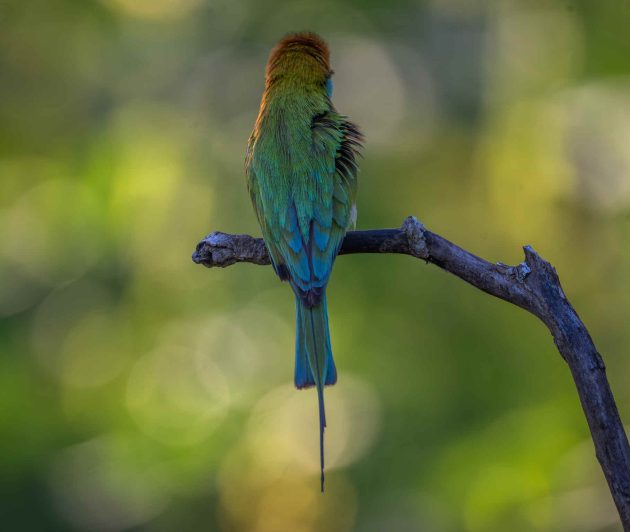
Another source, the Agriculture.Institute (sic), points out that the bee-eaters also create psychological damage to the bees affected: “Green Bee Eaters use their keen eyesight to spot bees from a distance. Once they identify a target, they swoop down with incredible speed and accuracy to catch the bee in mid-air. This hunting technique not only reduces the bee population but also stresses the remaining bees, affecting their productivity and colony health.” The institute suggests several methods to reduce having your precious bees being eaten, including visual or acoustic deterrents, the elimination of perching opportunities, and even the setup of alternative feeding stations.
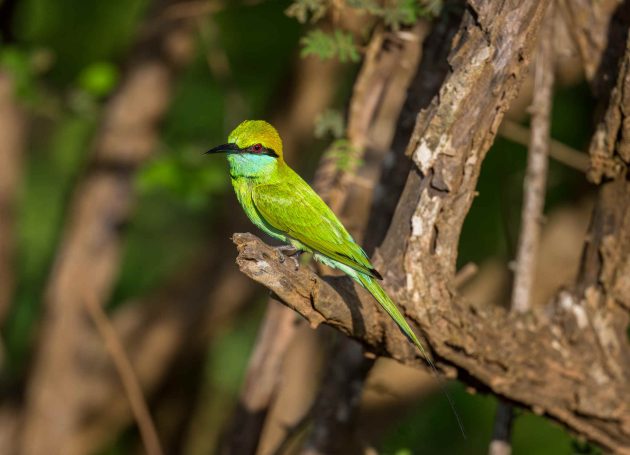
Scanning for bees and other prey is indeed the main daytime activity of Asian Green Bee-eaters. They do this on average 53% of their time, with the rest divided between feeding (21% – mostly this means wacking a prey item against some branch before swallowing it), flying (13%), resting (9%), and preening (4%) (source).
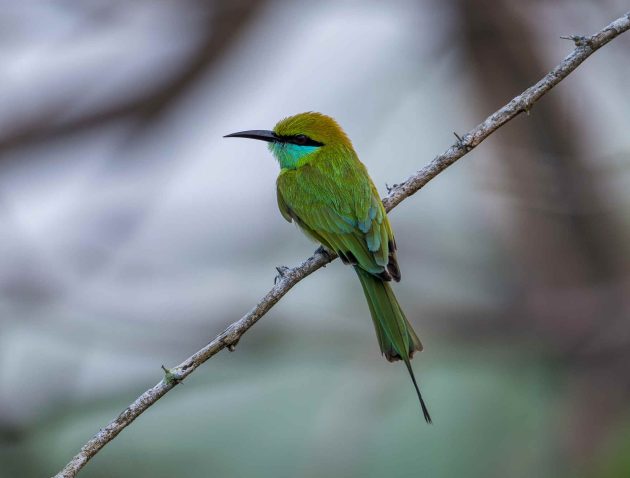
The scientific name of the Blue-tailed Bee-eater, Merops philippinus, also indicates its Asian distribution.

In China, commercial sand-digging initially created suitable nesting habitats to attract this bee-eater, but subsequently led to damage to nests. The authors of a study found that sand digging followed by protective measures is more helpful to Blue-tailed Bee-eaters than not digging at all. Then, in the last sentence of their abstract, they apparently recycle some phrases learned at school: “This study enriches the theories of conservation biology and emphasizes the importance of dialectical thinking regarding exploitative and seemingly destructive activities.”
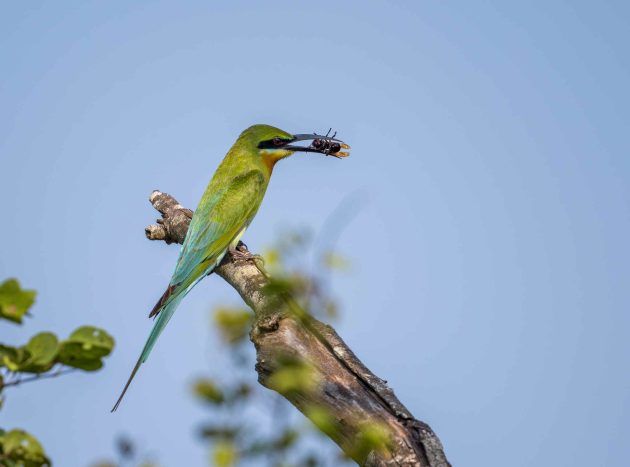
The different colors of the Blue-tailed Bee-eater have different underlying mechanisms (source). The species combines yellow chin feathers (colored by carotenoid pigments), green back feathers (colored by a combination of carotenoid pigments and feather nanostructure), and turquoise-blue rump feathers (colored by feather nanostructure).
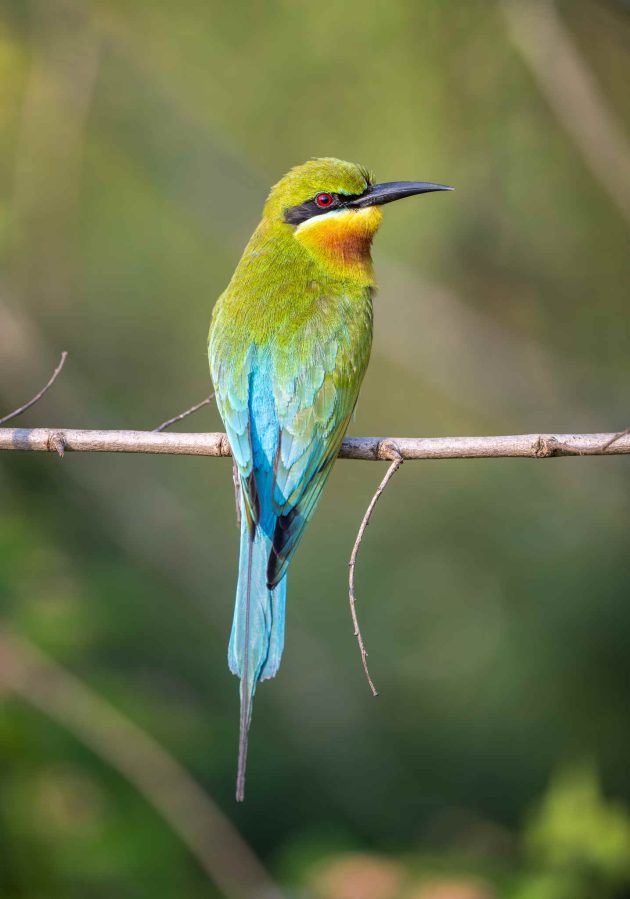
And depending on this, some of the colors (particularly those based on carotenoid pigments) are more likely to weaken under UV exposure. So don’t let your bee-eater stay out in the sun too long.
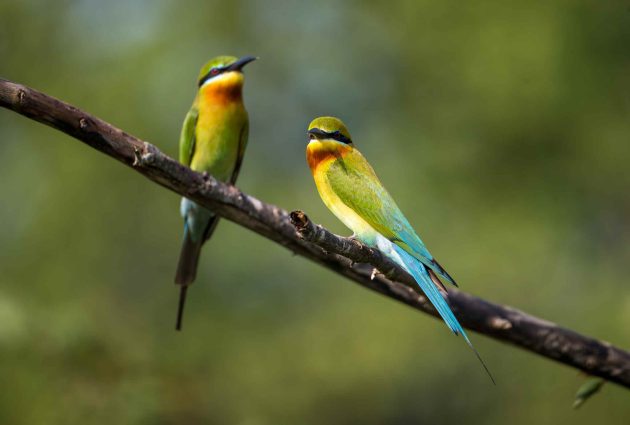
The colors also indicate the health and the sex of the individual Blue-tailed Bee-eater. Males are generally more intensely colored. Healthier males have darker chestnut throats and more chromatic green body plumage, while healthy females have more intensely colored blue rumps and yellow chins (source).
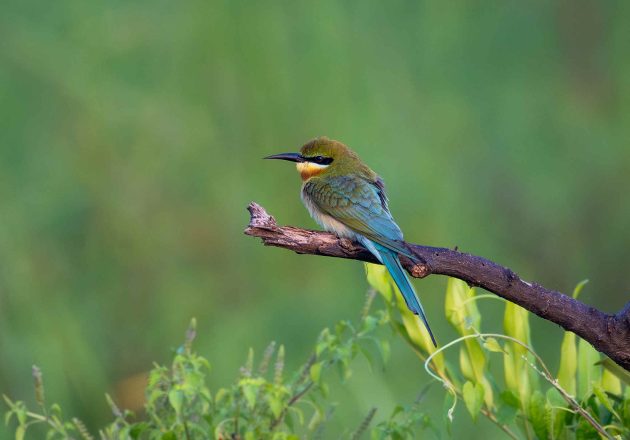
Blue-tailed Bee-eaters may threaten bees not only by eating them, but also by spreading pathogens. In the feces of the bird, spores of Nosema ceranae, an emergent microsporidium parasite affecting bees, were detected.
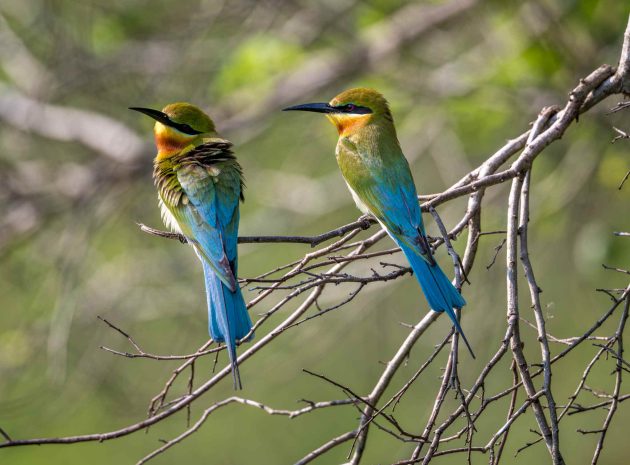
As for their social system, one researcher describes it as “complex”, which includes cooperative breeding, extrapair copulation, and intraspecific brood parasitism. So, “scandalous” might have been a better term.
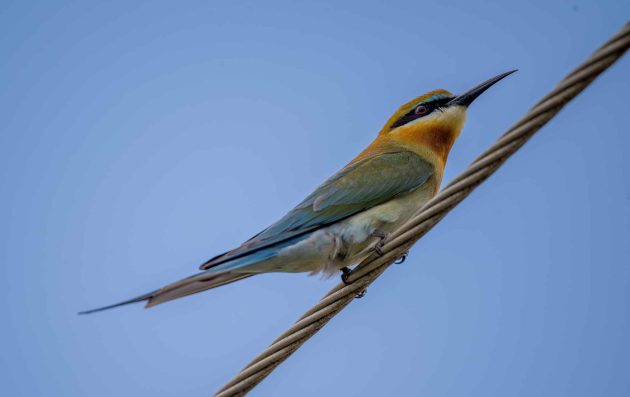
Finally, the Chestnut-headed Bee-eater, Merops leschenaulti, is scientifically named neither after its prey nor after a region but after a person whose name will probably take up a whole line in this post, Jean Baptiste Louis Claude Théodore Leschenault de la Tour (1773-1826).
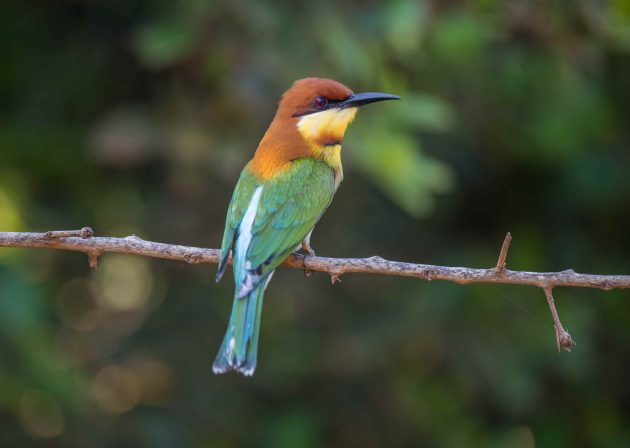
Apparently, the travel connections at that time were so bad that when he was put ashore on Timor due to an illness, he had to spend three years in Java. Makes you wonder whether to complain about late flights.
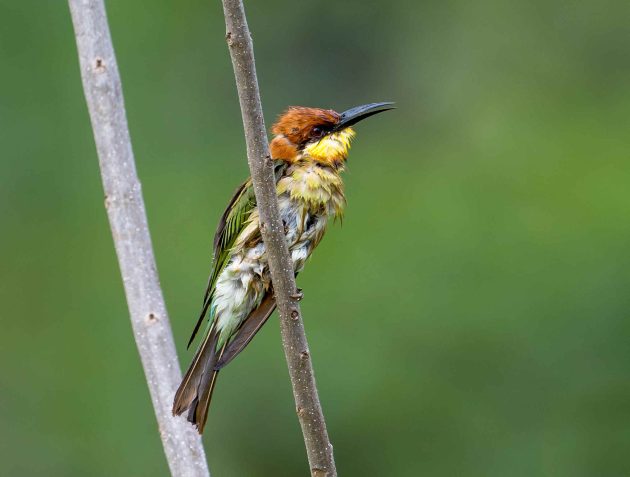
Resource partitioning is a phenomenon where different species in an ecosystem utilize resources in a way that reduces competition and allows coexistence. It is also a phenomenon that researchers try to show in their research, sometimes even though the actual evidence is rather limited.
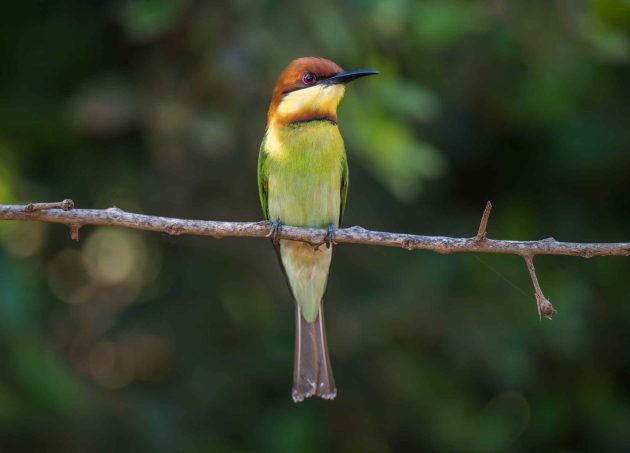
Take a study on “Resource partitioning between two sympatric bee-eater species at Chittagong University campus” (yes, again, on a university campus, probably next to the canteen), in which we meet our two friends, the Chestnut-headed and the Asian Green Bee-eater. Comparing their prey items, the researchers found that “Out of twelve insects preyed upon by two bee-eater species, hymenopterans were the maximum consumed food item of chestnut-headed bee-eater (25%) and green bee-eater (25%).” Apparently, this identical value leads them to conclude “The results suggest that, coexisting bee-eater species partition their resources to limit the effects of interspecific competition and it helps them to co-occur together.”
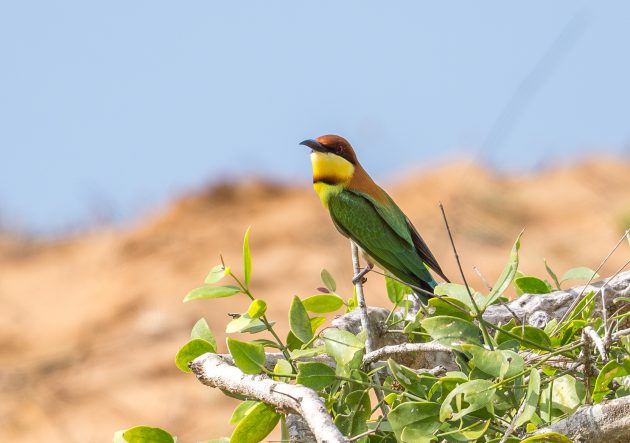
Somehow, this seems to indicate to me that
a. They have limited knowledge of English punctuation rules (the comma after “that”), and
b. That they were so determined to find resource partitioning that they found it independent of their research results.
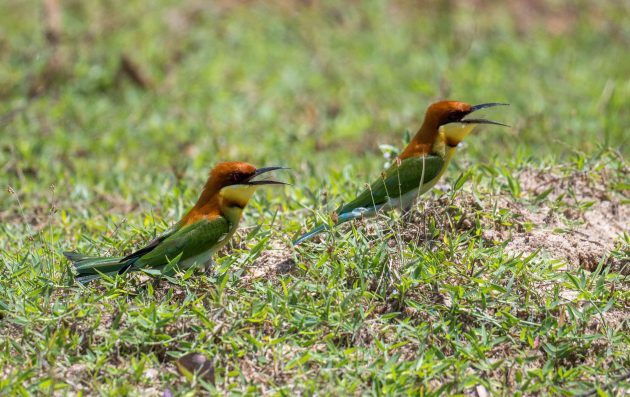
Two years later, the same two authors published a different study, in which they find that “the similar activity patterns between two bee-eater species could be influenced by similar lifestyles associated with their close taxonomic relationship.”. Guess what, again, this study was done in the most natural of environments, Chittagong University Campus.
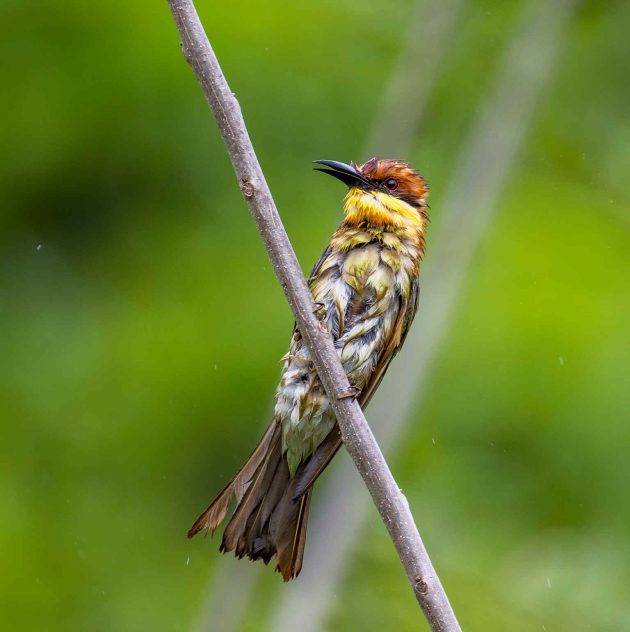
And if you are getting bored of all this information on bee-eaters and are looking for something different, you can always check out a paper on “The Occurrence of Quill Mites (Arachnida: Acariformes: Syringophilidae) on Bee-Eaters“. I don’t have photos of those quill mites, though.













Such cool birds
Hard to top Bee-eaters!
The photographs are wonderful—each one captures the vibrant colors and elegant motion of Bee-eaters in incredible detail.